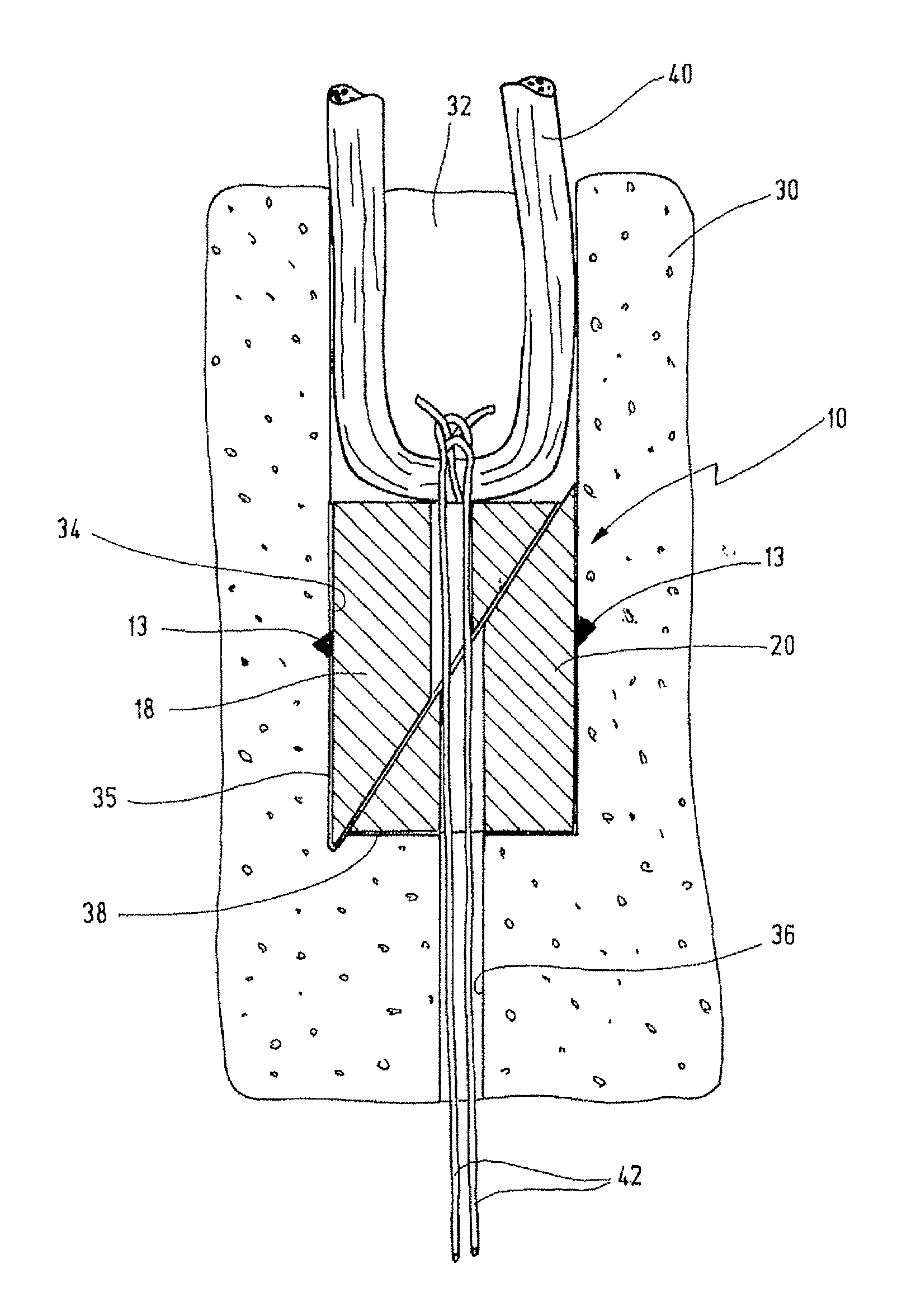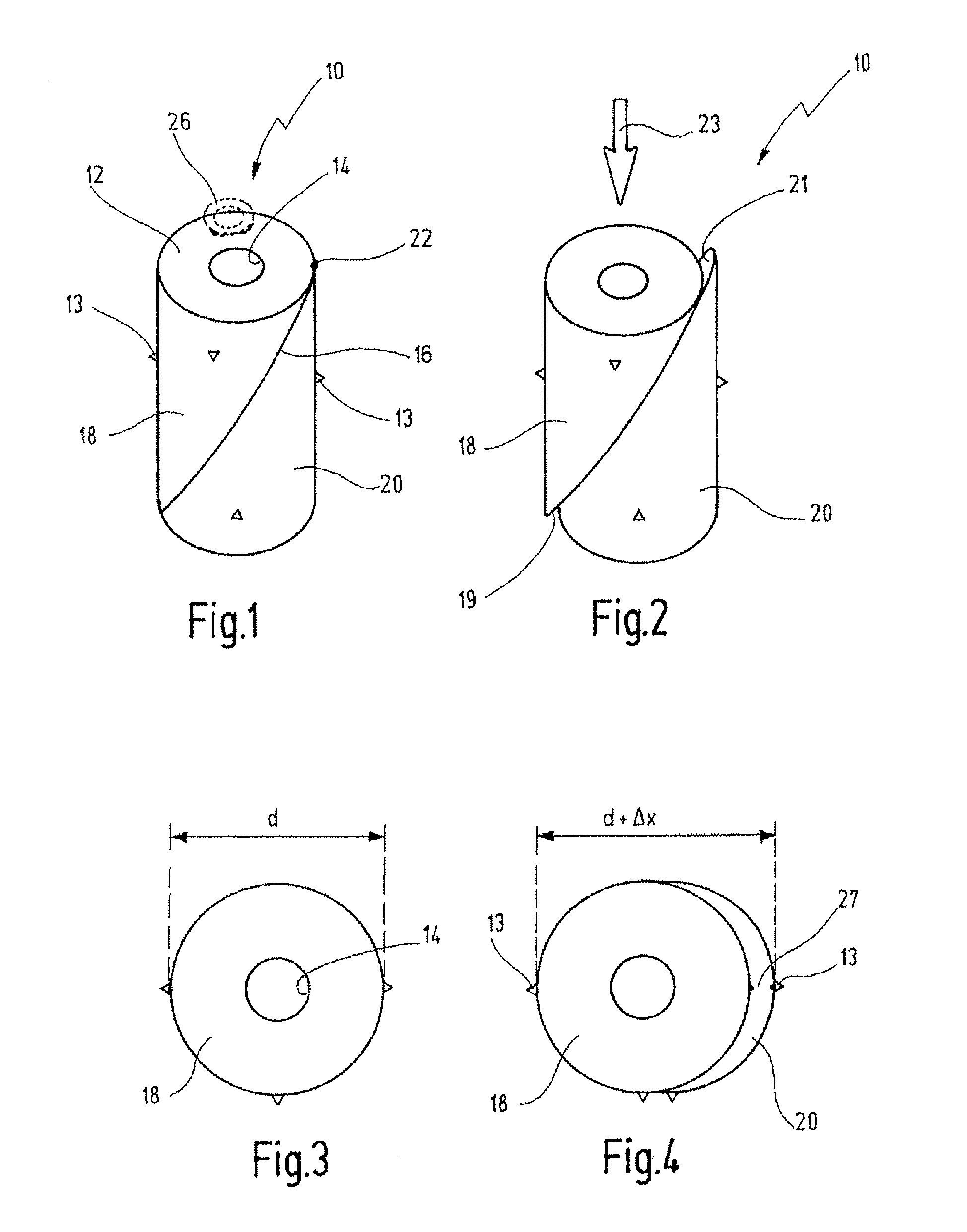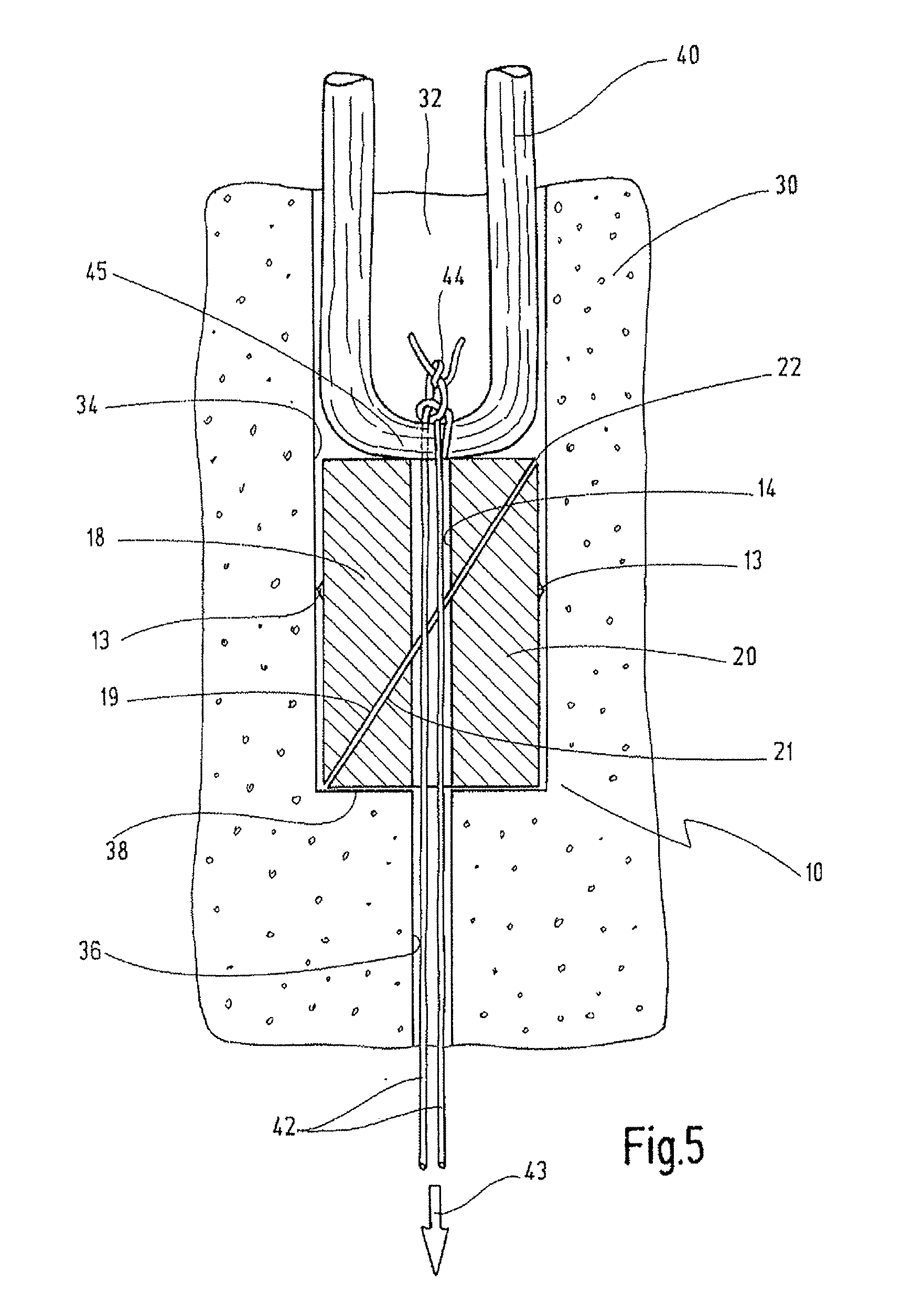Device For Blocking A Tendon Graft
a technology for tendon grafts and devices, applied in the field of devices for blocking tendon grafts, can solve the problems of tearing of tendon grafts and two structural elements, and achieve the effect of effective and irreversible blocking of wedges
- Summary
- Abstract
- Description
- Claims
- Application Information
AI Technical Summary
Benefits of technology
Problems solved by technology
Method used
Image
Examples
Embodiment Construction
[0041]A radially expandable element shown in FIGS. 1 to 4 is designated generally by reference number 10.
[0042]The element 10 is composed of a cylindrical body 12 with a continuous bore 14 extending centrally through it.
[0043]The body 12 is divided by a diagonal oblique cut 16 into two wedge-shaped bodies 18 and 20. The surface of the cut at the same time defines the two mutually facing wedge surfaces 19 and 21 of the wedge-shaped bodies 18 and 20.
[0044]The oblique cut 16 is not entirely continuous, and instead the two wedge-shaped bodies 18 and 20 are still connected to one another via a more or less punctiform predetermined break point 22, so that the body 12 is held in the position shown in FIG. 1, i.e. the two wedge-shaped bodies 18 and 20 do not come apart from one another. On its outside, the body 12 is provided with projections in the form of claws 13 that protrude radially from it. It will be seen from the plan view in FIG. 3 that the body has a diameter d.
[0045]When a force...
PUM
 Login to View More
Login to View More Abstract
Description
Claims
Application Information
 Login to View More
Login to View More - R&D
- Intellectual Property
- Life Sciences
- Materials
- Tech Scout
- Unparalleled Data Quality
- Higher Quality Content
- 60% Fewer Hallucinations
Browse by: Latest US Patents, China's latest patents, Technical Efficacy Thesaurus, Application Domain, Technology Topic, Popular Technical Reports.
© 2025 PatSnap. All rights reserved.Legal|Privacy policy|Modern Slavery Act Transparency Statement|Sitemap|About US| Contact US: help@patsnap.com



